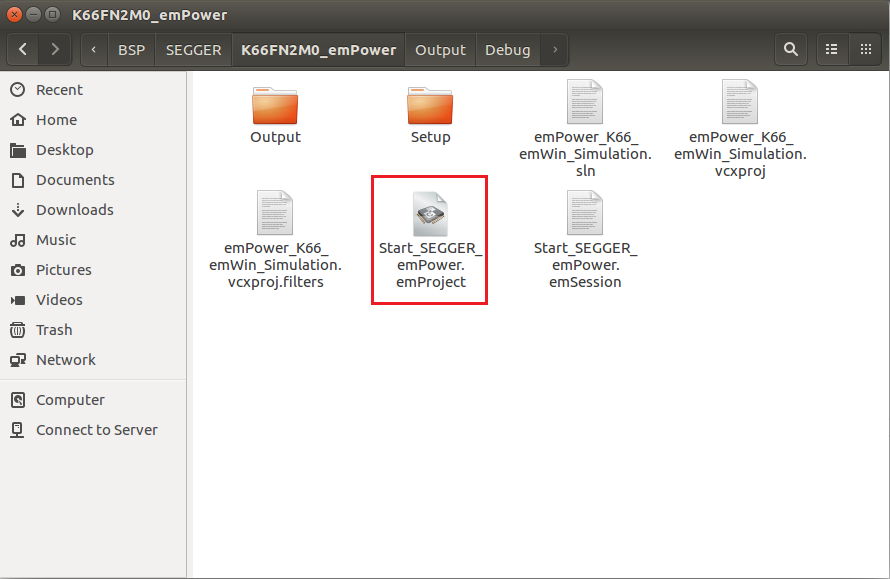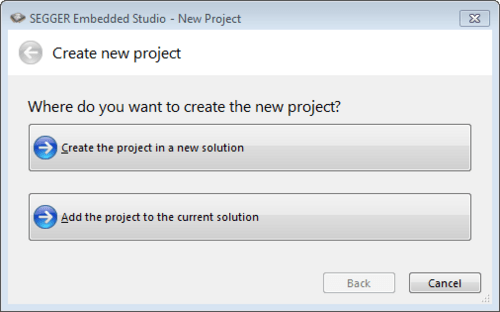

- #Open folder in segger embedded studio how to
- #Open folder in segger embedded studio software
- #Open folder in segger embedded studio trial
- #Open folder in segger embedded studio Pc
- #Open folder in segger embedded studio license
Specifies basic information about the device to be added, like the core it incorporates etc.
#Open folder in segger embedded studio how to
The included README.txt goes into detail on how to customize and build the installer executable. The template includes a pre-built example installer executable as well as sources for customizing and rebuilding the installer. Windows installer template (NSIS based): 220630_OpenFlashLoaderInstaller.zip Installerįor easier integration of Open Flashloader files, SEGGER provides a template for creating an installer which copies the flashloader and XML file(s) to their designated location. This feature has been introduced with V7.62. Note: The Open Flashloader concept replaces the previous RAMCode SDK. How to create a flash loader on your own using Embedded Studio is described below.
#Open folder in segger embedded studio license
SEGGER Embedded Studio (can be evaluated without license Supports Cortex-M, Cortex-A/R and RISC-V).
#Open folder in segger embedded studio trial

In order to add support for a new device to the J-Link DLL, the following needs to be added For more information about the tags and their attributes, please refer to XML Tags and Attributes. In order to add more than one flash bank, just repeat the tag structure from above, inside the same tag. For more information, please refer to Adding a new device. When adding new flash banks or if the device in the built-in database does not specify any flash banks so far, the same attribute requirements as for adding a new device, apply. In case the value of the attribute BaseAddr specifies an address of an existing flash bank for the existing device, in the built-in device database, the flash bank from the built-in database is replaced by the one from the XML file. The attribute Name of the tag must specify exactly the same name as the device in the built-in device database specifies. In order to edit/extend a device that is already in the built-in device database of the J-Link DLL, a *.xml with the following content has to be created or extended in the JLinkDevices folder: There is a standard location where the J-Link DLL will look for *.xml files.

It is also possible to edit / extend an device from the built-in device database via this XML file. This list can also be viewed on our website: Īdditionally, the build-in device database can be extended by specifying devices in a XML file.
#Open folder in segger embedded studio software
In case of doubt, please feel free to contact SEGGER.īy default, the J-Link DLL comes with a build-in device database that defines which device names are known and therefore officially supported by the J-Link DLL and software that uses the J-Link DLL. While they may work by chance, no support is provided for problems in regards to getting open flash loaders running on non-listed architectures. The open flash loader is available for the following architectures:Īrchitectures not listed here must be assumed as being not supported. This article explains how new devices can be added to the DLL and how existing ones can be edited / extended. to add support for internal EEPROM programming or SPIFI programming). It is also possible to edit / extend existing device support by for example adding new flash banks (e.g. The J-Link DLL allows customers to add support for new devices on their own. Therefore it might be desirable to be able to add support for new devices on your own, without depending on SEGGER and a new release of the J-Link Software and Documentation Pack being available. Also the existence of the device may have confidential status, so it might not be mentioned as being supported in public releases yet.
#Open folder in segger embedded studio Pc
2.11.1 PC has unexpected value after flash download.2.3 ARM Cortex-A and Cortex-R template projects.Information / Considerations / Limitations 1.8 JLinkDevices.xml Tags and Attributes.


 0 kommentar(er)
0 kommentar(er)
